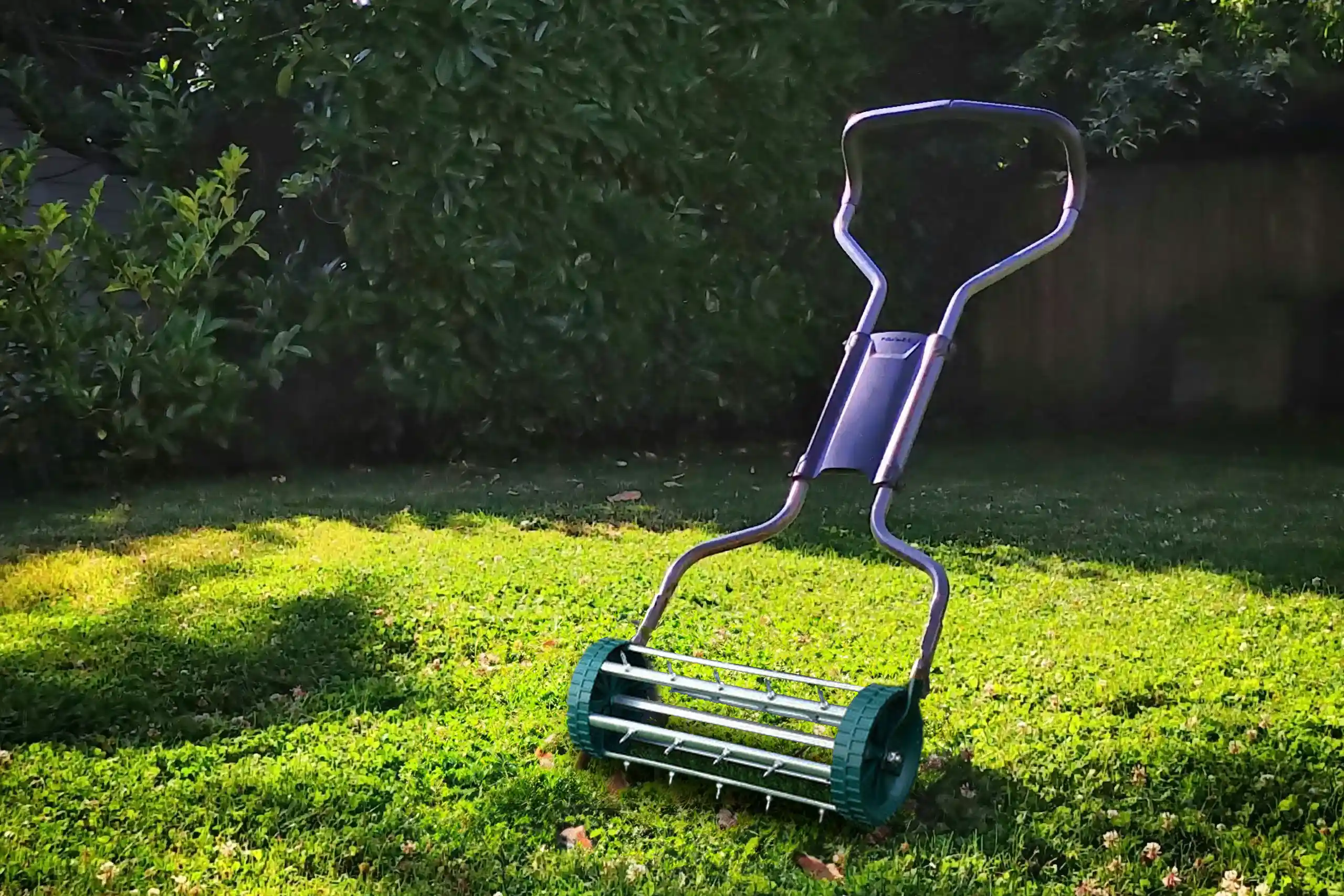Maintaining a lush and vibrant lawn requires more than just regular watering, mowing, and weeding.
One essential, but often overlooked, lawn care technique is lawn aeration.
This simple process can ensure that your lawn remains healthy and strong throughout the seasons.
Continue reading to learn everything you need to know about aerating your lawn, including why, when, and how to do it.
What is lawn aeration?
Over time, soil can become compacted due to external factors such as heavy foot traffic, weather conditions, or the use of heavy lawn equipment.
Compacted soil can make it difficult for grass roots to receive the air, nutrients, and water they need to thrive.
That is where aerating your lawn comes in.
This process requires you to poke small holes in soil beneath your lawn to alleviate the compaction, allowing essential resources to reach the roots more effectively.
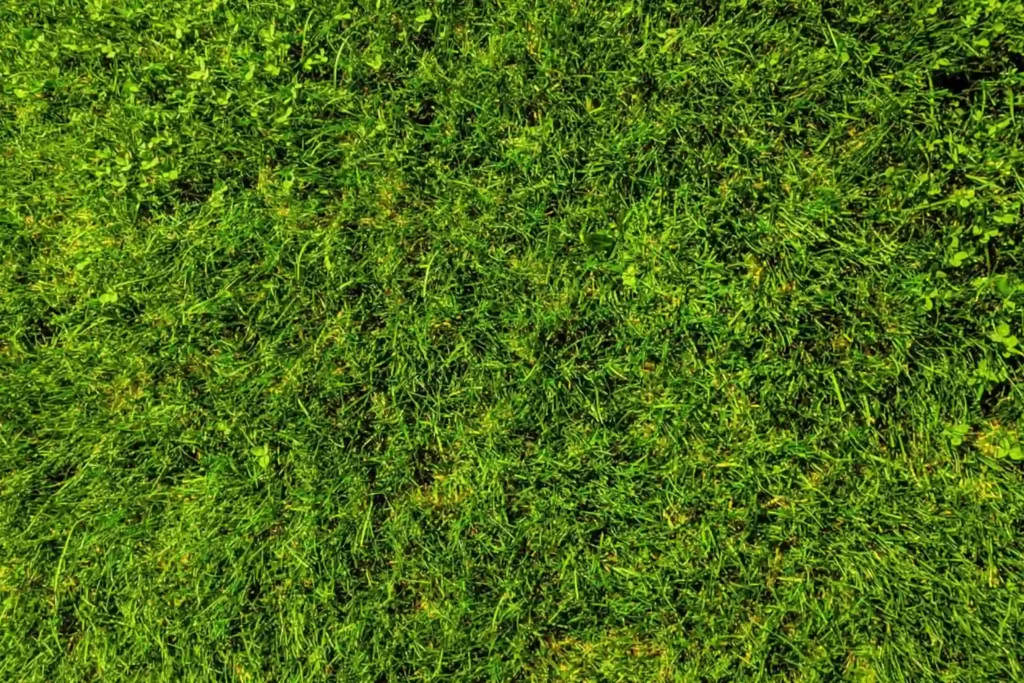
Why aerate your lawn?
If you find that your lawn is thin and weak, then you may want to consider adding aeration to your lawncare routine.
It is important to remember that even the most well-kept lawns can still suffer from soil compaction, loss of nutrients, and poor grass growth.
Here are some of the benefits of aerating your lawn:
- Aids soil compaction. Aeration loosens the soil, which can then help any developing grass roots to expand and develop more depth.
- Reduces thatch build-up. It is normal to have some thatch, but an excessive amount can prevent water and nutrients from reaching the soil. Aeration allows you to break up layers of thatch, allowing for better contact with the soil.
- Improves water and nutrient absorption. Compacted soil can significantly prevent the movement of water, nutrients, and air from reaching your grass’s roots. Aerating your lawn creates new ways for these vital resources to reach the roots.
- Assists with lawn recovery. Common environmental stressors, like pests and drought, can often leave your lawn looking sparse and patchy. Aeration ensures your lawn receives everything it needs to promote recovery and growth.
If a lawn is not aerated, it will not be receiving the essentials it needs to survive.
So, over time, you will find that your grass grows thinner and weaker before eventually dying out.
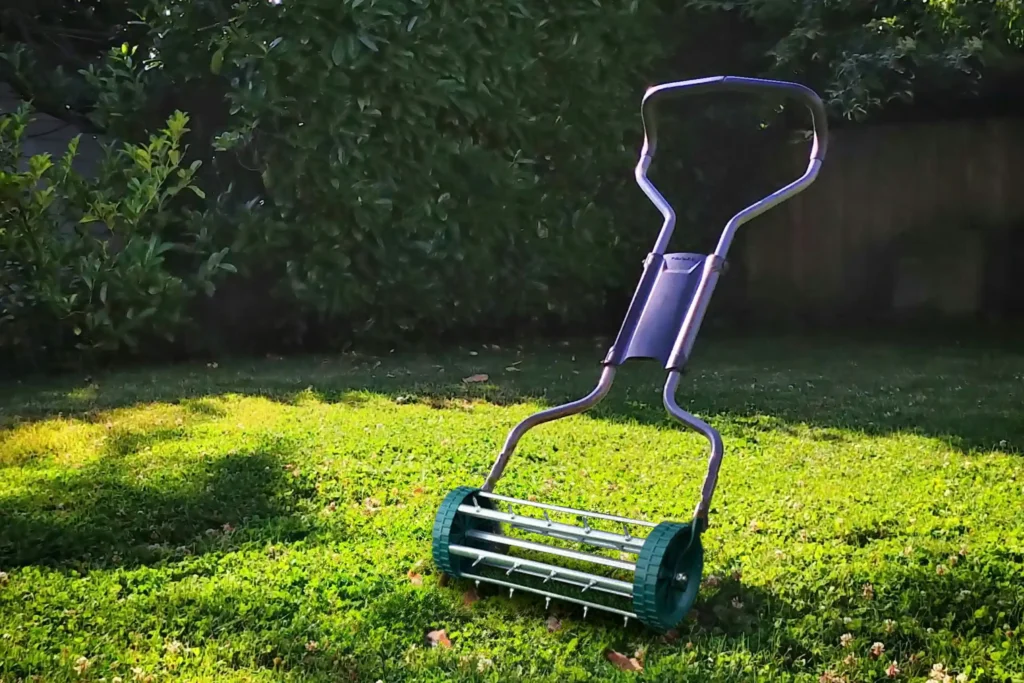
When should you aerate your lawn?
Much like when you are considering when to overseed your lawn, planning when to aerate is just as important.
Ideally, you want to aerate your lawn when grass seeds are actively growing.
For cool-season grasses, such as Kentucky Bluegrass and Fescue, the ideal time is early spring or autumn, while warm-season grasses should be aerated in late spring or early summer. Generally, when planning to carry out this process, you want to ensure it is at a time when your grass is actively growing so it can quickly recover from the aeration.
Aerating during the wrong seasons, i.e. the height of summer or winter, when the weather conditions can be much harsher, can put stress on your lawn and cause it to become uneven.
In addition, we advise against aerating after heavy rainfall, as this can cause the ground to become waterlogged and leave the water sitting on the surface instead of draining through the soil.
How often should you aerate your lawn?
How frequently you need to aerate your lawn depends on a number of factors, including your soil type, lawn usage, and the condition of your grass.
For example, if your lawn has sandy soil, is not subjected to much foot traffic, and is healthy, then aerating every three years is enough.
However, if your lawn has hard or clay soil, you should aerate every two years, as this soil type compacts more easily.
For the average garden, it is recommended to aerate once or twice a year to maintain a healthy lawn.
If you are concerned that your lawn may need aerating, there are some sure signs that can easily identify when you should carry out this process.
How can I tell if my lawn needs aerating?
Whether you are new to lawncare or a seasoned gardener, you can usually gauge how to tell if your lawn needs aerating by looking out for the following:
- Soil compaction. You can test this by touching the lawn or inserting a gardening tool into the soil. If the soil is feeling hard or you are finding it difficult to break through the soil with your tool, this is a sign of compaction.
- Poor water drainage. If soil is compacted, you will usually find that water may start pooling or running off your lawn during or after rainfall. This indicates that water is not being absorbed and therefore is not reaching your grass’s roots.
- Thinning or patchy grass. Grass that has started to thin out or develop bare patches can also suggest that compaction has occurred, as grass roots are not able to spread and grow.
- Thatch build-up. If your lawn looks less than its usual vibrant green shade after mowing, this could be an indication of excessive thatch build-up. Thatch, essentially dead grass and roots, can leave your lawn looking brown, as it can hinder air, water, and nutrient absorption.
If you have noticed one or more of these signs, then it is likely that your lawn would benefit from aeration.
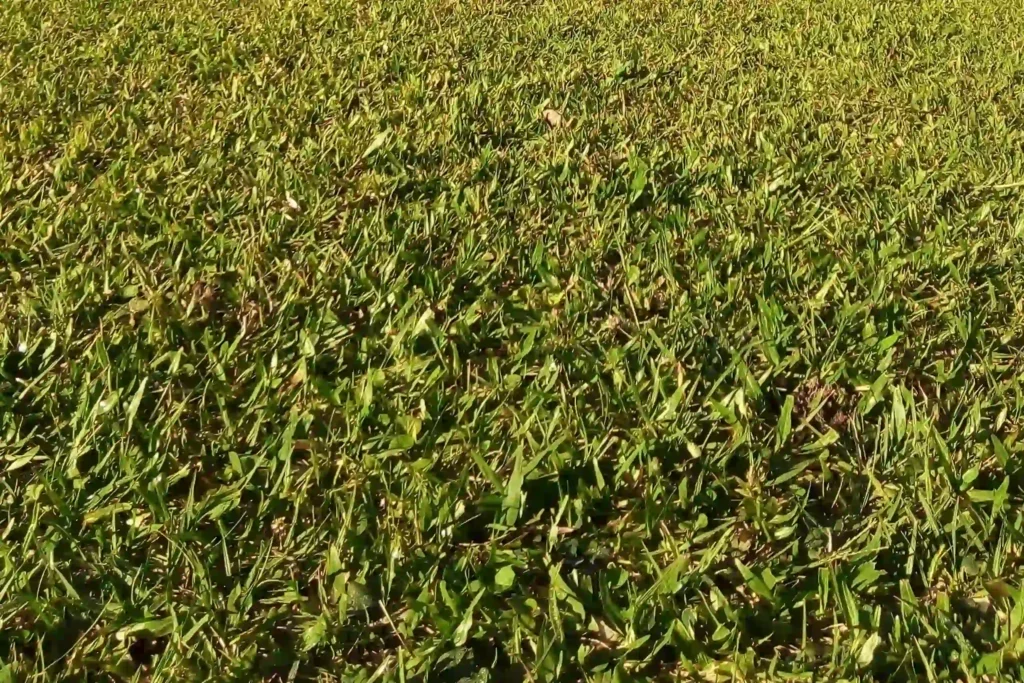
Should soil be wet or dry when aerating?
To get the best results, you want to ensure that the soil is moist when aerating.
If the soil is too wet, it can become muddy and difficult, resulting in uneven holes and damage to your lawn.
However, if the soil is too dry, it will be hard to pierce the soil with the aerator and create sufficient holes to relieve compaction.
Ideally, you need to water your lawn one to two days before aerating to ensure the soil is moist.
Should I mow before aerating?
For the best results from aeration, mow your lawn to a height of 1.5 to 2 inches the day before. This will make it easier to move the aerator and help the tines penetrate the soil more effectively.
How to aerate your lawn
Now that we have established what aeration is, why it is important, and what you need to do beforehand, it is time to look at how you can carry out the process yourself.
Although it may sound technical, aeration could not be simpler.
Use the following steps to successfully aerate your lawn:
- Choose your equipment. This usually depends on the size and condition of your lawn. If you have a large garden, you may want to consider using an electric aerator to save time, while those with smaller gardens can opt for hollow tine aerators, garden forks, or spike aerators.
- Prepare your lawn. Ensure your lawn is mowed to the correct height and watered a day or two beforehand, as this will allow the aeration process to work more effectively.
- Aerate in straight lines. Just as you would when mowing or scarifying, it ensures that all areas of your lawn have been successfully aerated.
- Focus on problem areas. If you are using a machine to aerate your lawn, be sure to check over heavily compacted and high-traffic areas to make sure they have been aerated effectively.
- Leave the soil plugs. If you have used a hollow tine or core aerator, you will notice that they create small soil plugs on top of the lawn. You should leave these as they will naturally break down, decompose, and fill up the holes left by the aeration process. However, if you do not wish to leave them, you can mow over them a few days after aeration.
Once you have successfully aerated your lawn, you can start providing your lawn with aftercare, which is essentially helping your lawn fully recover and thrive.
What should you do after aerating?
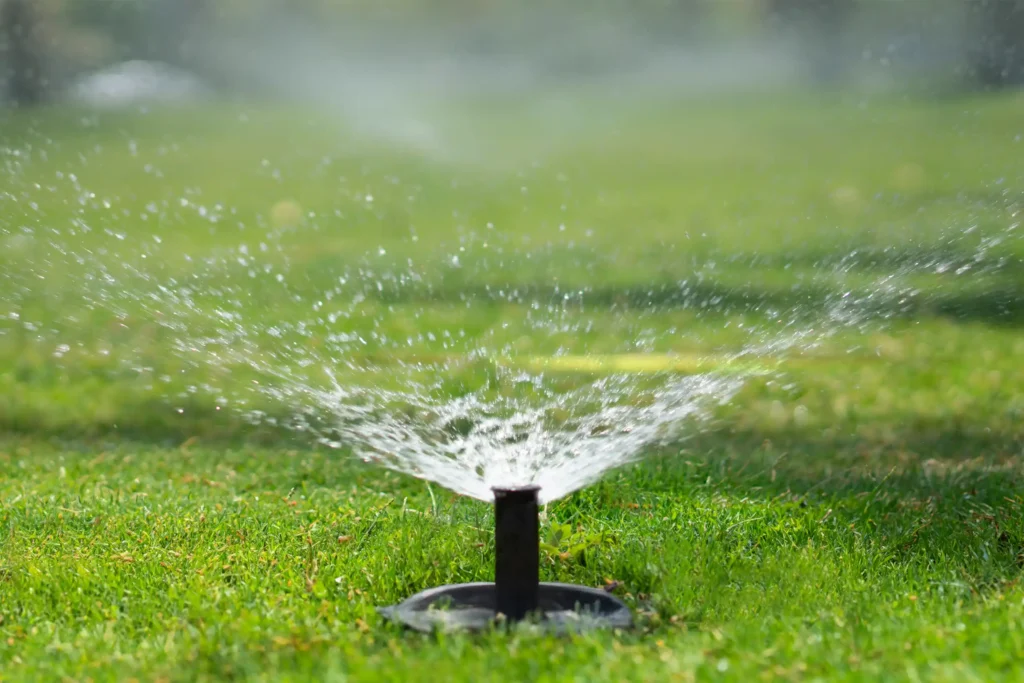
Aerating your lawn is an essential step to achieving a fuller and healthier lawn, but it does not stop there.
Post-aeration maintenance helps you to achieve the best results from the process, ensuring that your lawn recovers quickly and grows stronger.
Here are our top tips for caring for your lawn after aeration:
Water your lawn.
You should water your lawn immediately after aerating, as this will help settle the soil and kickstart your lawn’s recovery.
Apply fertiliser.
After aeration is the perfect time to apply fertiliser, as the holes created will allow the fertiliser to reach your grass roots more effectively.
Our specialised Nourish & Nurture Fertiliser has been expertly blended to promote effective growth and nourishment for your grass seeds.
Consider overseeding.
If your lawn has developed patches, post aeration is also the ideal moment to overseed your lawn.
This is because the holes created provide the perfect environment for new grass seeds to establish.
Seeds can easily settle into the soil, allowing for optimal germination and resulting in a thicker and healthier lawn.
Our high-quality Thick & Thriving Grass Seed Mix is formulated for quick germination, promoting a lush and resilient lawn.
To learn how to overseed your lawn successfully, check out our handy guide.
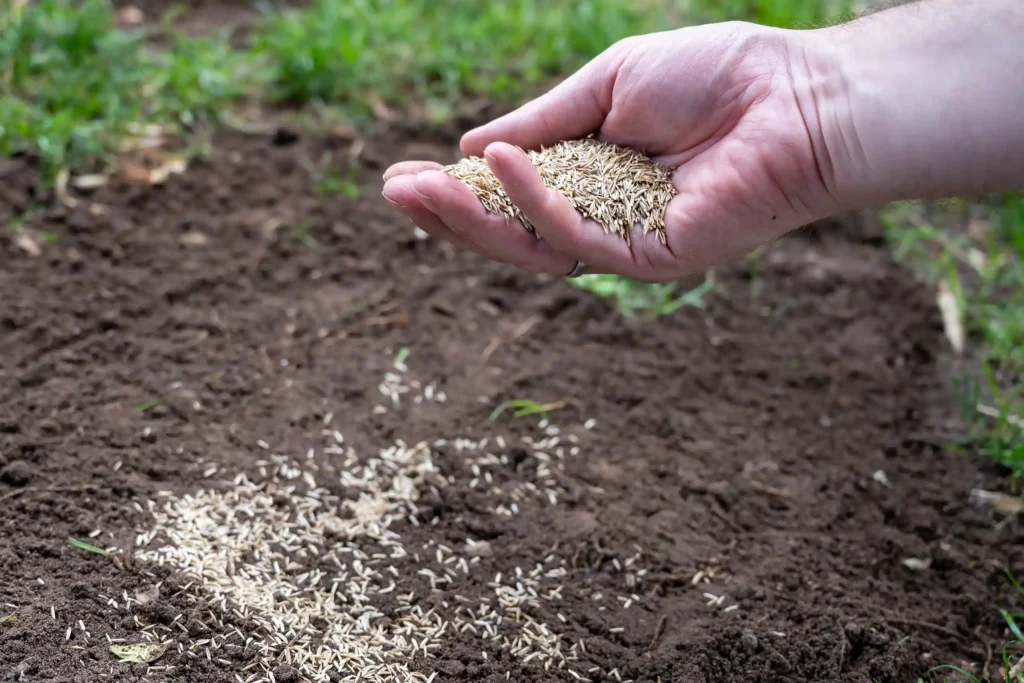
Maintain a schedule.
Finally, when caring for your lawn after aeration, it is important to carry out a routine mowing and watering schedule throughout the year.
This helps to maintain the benefits of processes like aeration and keep your lawn vibrant all season long.
Ready to boost your lawn’s health?
Aeration is a simple yet extremely effective lawn care technique that can significantly improve your lawn’s health, helping it grow thicker, healthier, and more resilient.
By understanding the importance of aeration and how to carry this process out, you can ensure your lawn receives the necessary nutrients, air, and water it needs to flourish.
Aerate your lawn with confidence by taking our quiz to find the best products tailored to your lawn type.
